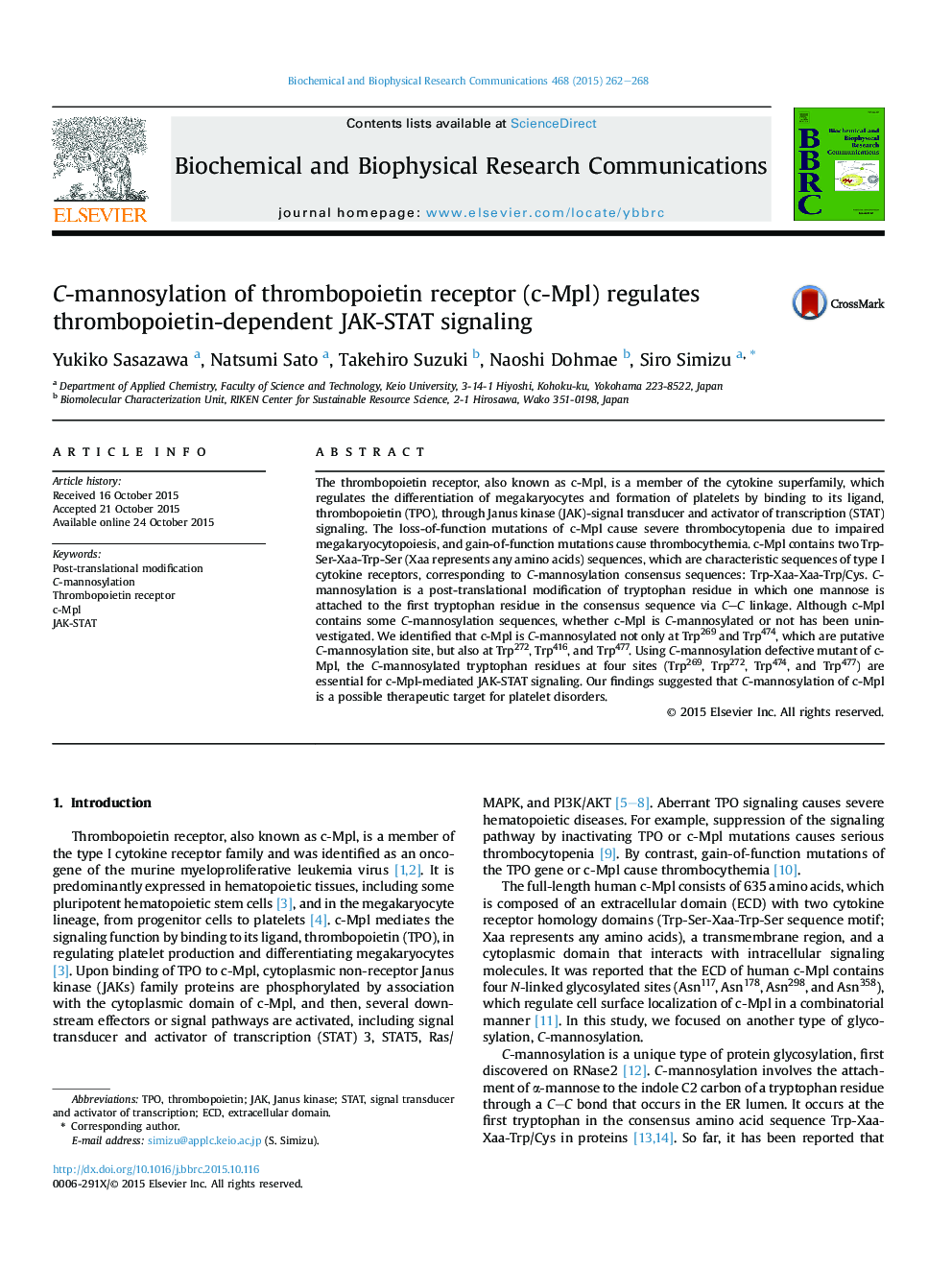| Article ID | Journal | Published Year | Pages | File Type |
|---|---|---|---|---|
| 8296780 | Biochemical and Biophysical Research Communications | 2015 | 7 Pages |
Abstract
The thrombopoietin receptor, also known as c-Mpl, is a member of the cytokine superfamily, which regulates the differentiation of megakaryocytes and formation of platelets by binding to its ligand, thrombopoietin (TPO), through Janus kinase (JAK)-signal transducer and activator of transcription (STAT) signaling. The loss-of-function mutations of c-Mpl cause severe thrombocytopenia due to impaired megakaryocytopoiesis, and gain-of-function mutations cause thrombocythemia. c-Mpl contains two Trp-Ser-Xaa-Trp-Ser (Xaa represents any amino acids) sequences, which are characteristic sequences of type I cytokine receptors, corresponding to C-mannosylation consensus sequences: Trp-Xaa-Xaa-Trp/Cys. C-mannosylation is a post-translational modification of tryptophan residue in which one mannose is attached to the first tryptophan residue in the consensus sequence via C-C linkage. Although c-Mpl contains some C-mannosylation sequences, whether c-Mpl is C-mannosylated or not has been uninvestigated. We identified that c-Mpl is C-mannosylated not only at Trp269 and Trp474, which are putative C-mannosylation site, but also at Trp272, Trp416, and Trp477. Using C-mannosylation defective mutant of c-Mpl, the C-mannosylated tryptophan residues at four sites (Trp269, Trp272, Trp474, and Trp477) are essential for c-Mpl-mediated JAK-STAT signaling. Our findings suggested that C-mannosylation of c-Mpl is a possible therapeutic target for platelet disorders.
Keywords
Related Topics
Life Sciences
Biochemistry, Genetics and Molecular Biology
Biochemistry
Authors
Yukiko Sasazawa, Natsumi Sato, Takehiro Suzuki, Naoshi Dohmae, Siro Simizu,
